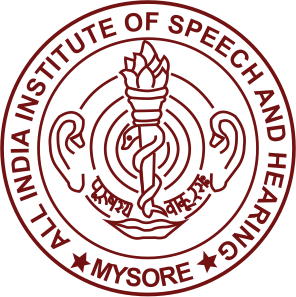
Indian Literature Database
| |

|
http://localhost:8080//handle/123456789/2821| Title: | Impact of Articulation Therapy on Perceptual Characteristics of Bilabials in Children with Repaired Cleft Lip and Palate |
| Authors: | Sushma, M Pushpavathi, M Gopi Sankar, R |
| Keywords: | Articulation therapy;Bilabials;Percentage of correct consonants-revised;Perceptual;Evaluation;Repaired cleft lip and palate |
| Issue Date: | 2022 |
| Journal Name: | Journal of Cleft Lip Palate and Craniofacial Anomalies |
| Volume No.: | 9 |
| Issue No.: | 1 |
| Pages: | 7-13 |
| Abstract: | Purpose: The study's objectives were to assess the effect of articulation therapy for bilabials on SODA errors, cleft type errors (CTEs), and percentage of correct consonants-revised (PCC-R) in children with repaired cleft lip and palate. Methods: Single-subject with multiple baselines research design was used to investigate the changes in bilabials across four-time points. Four participants with repaired cleft lip and palate (RCLP) between 4 and 7.11 years were considered. For the assessment, pictures of six words were visually presented, and the participants were asked to name them. Three speech-language pathologists identified SODA errors and cleft type errors (CTE), based on which PCC-R was calculated. Participants underwent ten intensive articulation therapy sessions: phase I focused on auditory discrimination training and phase II on production training. The production training mainly focused on the phonetic placement approach, shaping the target sound, and improving the oral airflow. Results: Overall, SODA error analysis revealed substitution and distortion errors during the baseline assessment. CTE analysis indicated weak oral pressure consonant followed by a glottal stop, nasalization of voiced pressure, nasal consonants for oral pressure consonants, and voicing errors. PCC-R scores ranged from 0% to 83.33%. Assessment 4 indicated only distortion errors during SODA error analysis, weak oral pressure consonants during CTE analysis PCC-R was 100%. The obtained results indicate an improvement in the articulation placement and oral airflow; thus, the participants benefited from the intervention program. |
| URI: | http://localhost:8080//handle/123456789/2821 |
| Appears in Resource: | Journal Articles |
| File | Description | Size | Format | |
|---|---|---|---|---|
| Impact of Articulation Therapy on Perceptual Characteristics of Bilabials in Children with Repaired Cleft Lip and Palate.pdf | 784.76 kB | Adobe PDF | View/Open |
Items in Database are protected by copyright, with all rights reserved, unless otherwise indicated.